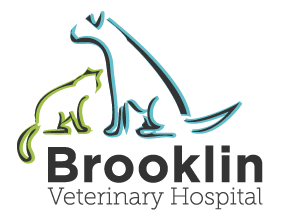Library
-
Cyanocobalamin (vitamin B12 or cobalamin) is a vitamin supplement used to treat systemic deficiencies. It can be given through a subcutaneous injection or oral tablet. The injection may sting temporarily, but otherwise is very safe. If a negative reaction occurs, call your veterinary office.
-
Cyanosis is a bluish discoloration of the skin and mucous membranes of the body caused by inadequate oxygen levels. Cyanosis is an emergency, and the root cause may be life-threatening and may or may not be reversible. Once back home, homecare instructions must be followed carefully.
-
Cyanosis is a bluish discoloration of the skin and mucous membranes of the body caused by inadequate oxygen levels. Cyanosis is an emergency, and the root cause may be life-threatening and may or may not be reversible. Once back home, homecare instructions must be followed carefully.
-
Cyclophosphamide is given by mouth or injection and is used off label in cats, dogs, horses and rabbits to treat various cancers, such as lymphoma, leukemia, carcinoma, and sarcoma.
-
Cyclosporine ophthalmic ointment is an immunosuppressant used in the treatment of eye diseases suspected to be immune-related, including keratoconjunctivitis sicca (KCS) and other inflammatory conditions of the eye. Cyclosporine comes as an ophthalmic ointment but may sometimes be compounded into a higher concentration ophthalmic solution for pets not responding to the ointment. It is important to remember that it may take days to weeks to notice improvement. Do not stop giving the medication without asking your veterinarian. If signs of serious side effects or immune suppression occur, contact your veterinarian immediately.
-
Cyclosporine (Atopica®) is given by mouth and is used to treat immune-mediated diseases, such as atopic dermatitis (skin allergies), in cats and dogs, and other immune-mediated conditions.
-
Cyproheptadine is given by mouth and is used off label in cats, dogs, and horses to treat allergic skin conditions, certain toxicities, and to stimulate appetite. Give as directed by your veterinarian. Common side effects include sleepiness, increased appetite, and dry mouth.
-
Cystine bladder stones appear to be the result of a genetic abnormality that prevents a dog from reabsorbing cystine from the kidneys. While bladder stones in general are somewhat common in dogs, cystine bladder stones are rare. Your veterinarian may be able to palpate the stones or may need to perform imaging studies such as a bladder ultrasound or a contrast radiographic study. There are two primary treatment strategies for treating cystine bladder stones in dogs: dietary therapy to dissolve the stones, or physical removal of the stones. Cystine stones have a high rate of recurrence, despite careful attention to diet and lifestyle.
-
In cats, diseases of the lower urinary tract (bladder and urethra) are often grouped under the term feline lower urinary tract disease (FLUTD). Typical signs in cats with FLUTD are those of inflammation and irritation of the lower urinary tract. There are many potential causes of FLUTD, and diagnosis is based on assessing clinical signs and laboratory testing. There is no universal treatment for FLUTD. Each case has to be investigated to determine the underlying cause, and then the treatment has to be tailored to the individual cat.
-
Cystitis means inflammation of the bladder. The most common cause of cystitis in dogs is bacterial infection. Other common causes include bladder stones, tumors or polyps in the bladder, and abnormal anatomy. The most common clinical sign is blood in the urine (hematuria). The first group of tests performed includes urinalysis, urine culture, and bladder palpation. Further diagnostics may include bladder radiographs, ultrasound, and contrast X-rays. Blood tests to look for systemic problems are also sometimes required. Treatment is based on the cause.



